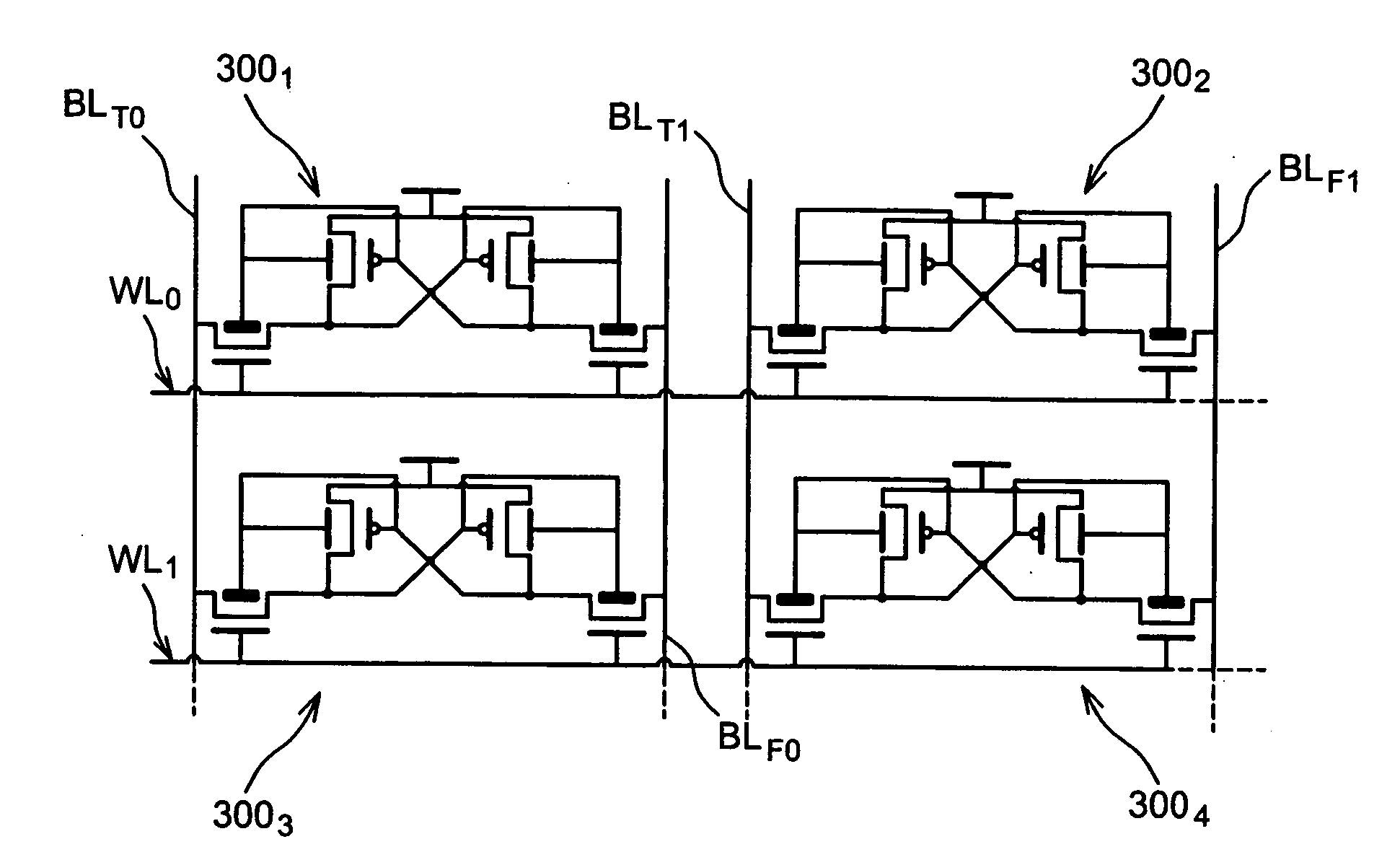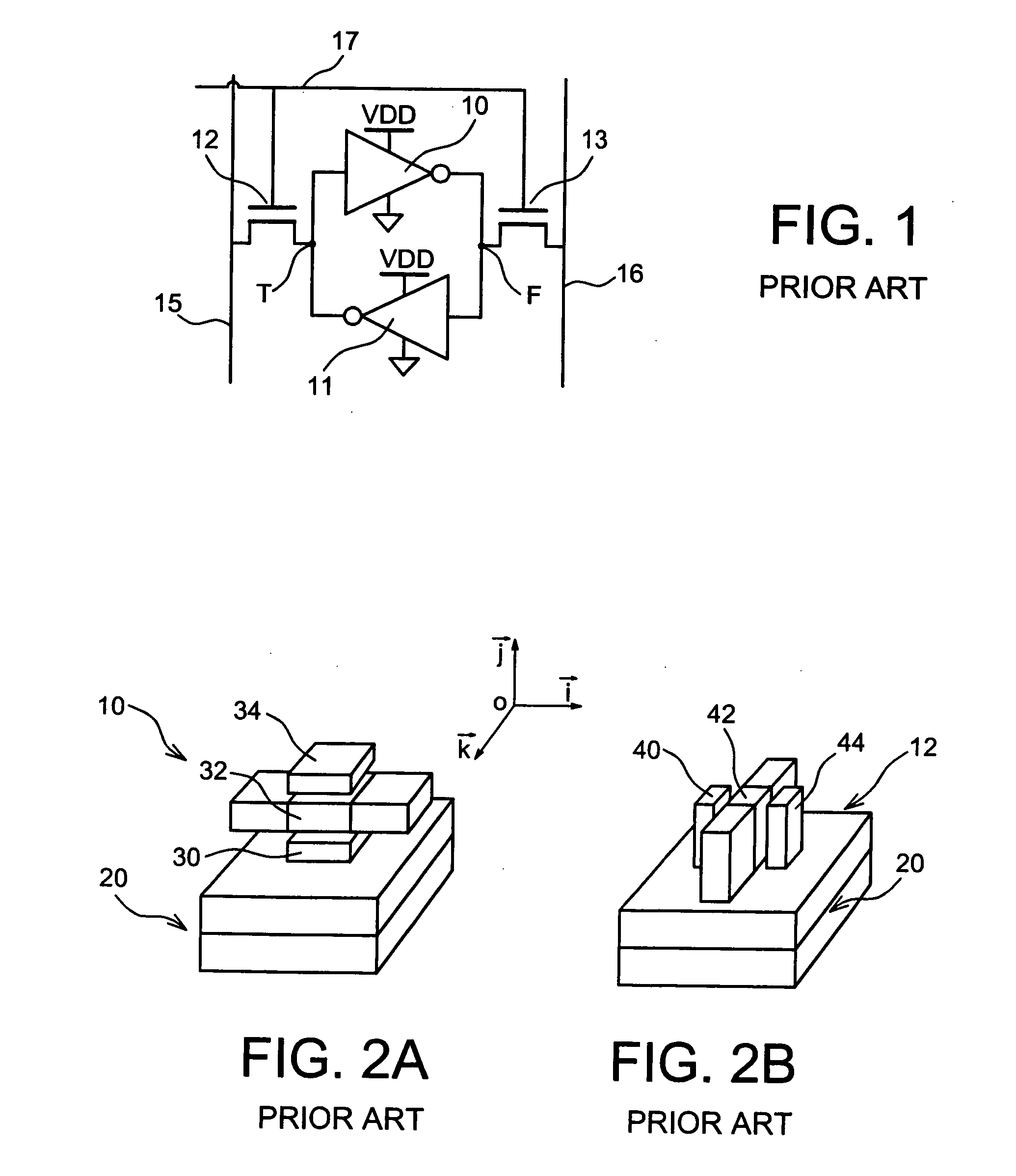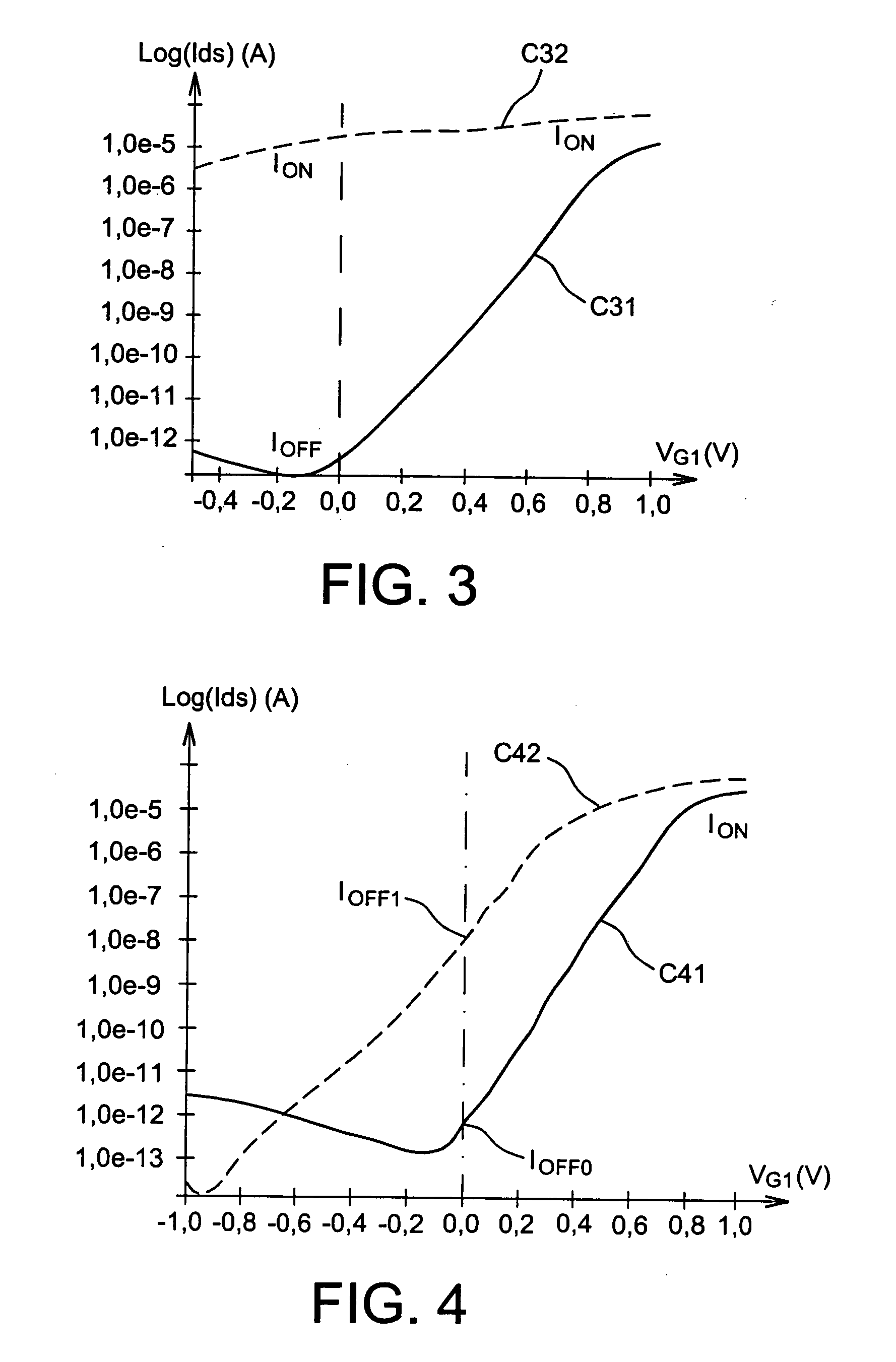Memory cell provided with dual-gate transistors, with independent asymmetric gates
- Summary
- Abstract
- Description
- Claims
- Application Information
AI Technical Summary
Benefits of technology
Problems solved by technology
Method used
Image
Examples
Embodiment Construction
[0075]An example of a microelectronic device according to the invention, comprising at least one random access memory cell structure, will now be described.
[0076]The cell may be of the SRAM (SRAM standing for Static Random Access Memory) and is provided with dual-gate transistors, which may for example be implemented in CMOS technology (CMOS standing for “Complementary Metal Oxide Semiconductor”). By dual-gate transistors it is understood that these transistors comprise independent first and second gates formed on each side of an active zone, the first gate and the second gate being connected to each other or not.
[0077]The transistors of the cell may have a dual gate with a so-called “planar” structure, formed from a first gate and a second gate, arranged so that the first gate, a semiconductor active zone intended to form one or more channels, and the second gate, are superimposed on a support.
[0078]In FIG. 2A, an example of a transistor 10 formed on a substrate 20 and provided wit...
PUM
 Login to View More
Login to View More Abstract
Description
Claims
Application Information
 Login to View More
Login to View More - R&D
- Intellectual Property
- Life Sciences
- Materials
- Tech Scout
- Unparalleled Data Quality
- Higher Quality Content
- 60% Fewer Hallucinations
Browse by: Latest US Patents, China's latest patents, Technical Efficacy Thesaurus, Application Domain, Technology Topic, Popular Technical Reports.
© 2025 PatSnap. All rights reserved.Legal|Privacy policy|Modern Slavery Act Transparency Statement|Sitemap|About US| Contact US: help@patsnap.com



